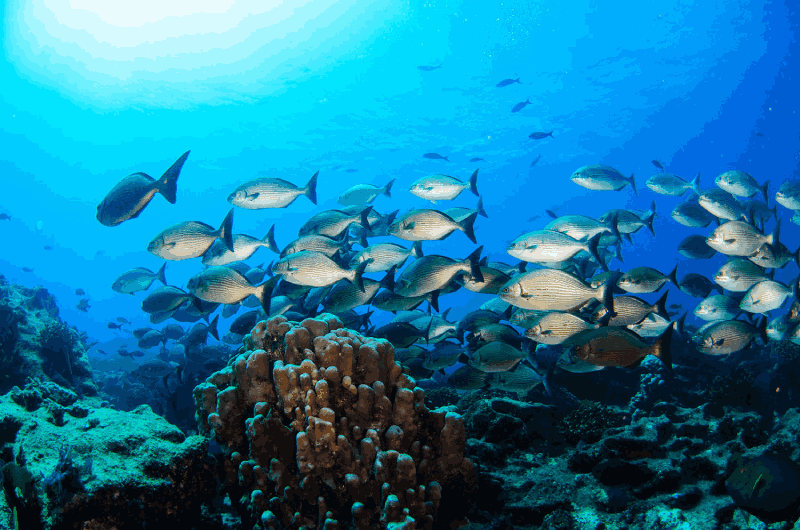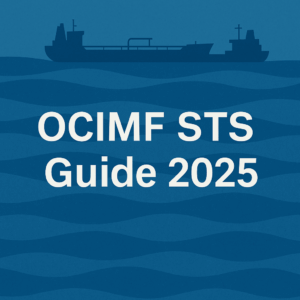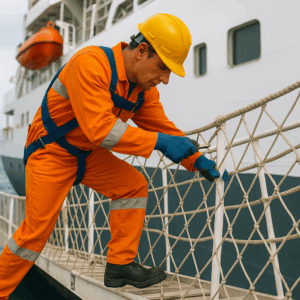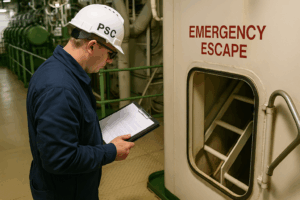The updated IMO Biofouling Guidelines, which were implemented in 2023, offer new instructions on how to stop the proliferation of marine invasive species. These are the main suggestions.
Marine invasive species infestations are a major threat to the world’s oceans and the conservation of biodiversity. It can be triggered by marine hull biofouling, the accumulation of aquatic organisms on ships’ hulls, which are then transported around the globe and inadvertently deposited in non-native waters. Here, they can become invasive, out-competing native species and multiplying into pest proportions.
Biofouling on a ship’s hull can cause friction, known as hydrodynamic drag, which can increase fuel consumption by up to 35 percent. Proper biofouling management can help improve energy efficiency and reduce air emissions from ships.
New IMO guideline
Best practices to avoid biofouling as set out in the revised Guidelines The 2023 Guidelines for the control and management of ships’ biofouling, aimed at minimizing the transfer of invasive aquatic species, are an updated version of the 2011 guidelines. These guidelines provide a consistent global approach to the management of biofouling. They cover various issues such as ship design, selection of antifouling systems, hull cleaning, and maintenance.
Several countries, including Australia, have strict enforcement regimes in place to protect their sensitive marine ecosystems from biofouling. Vessels found to be in violation of these regulations can be ejected from territorial waters. An example of this is a cruise ship that was recently evicted from New Zealand waters and later denied entry to Australian ports due to marine biofouling on her hull. The vessel was forced to wait offshore for several days while professional divers cleaned the hull. Passengers onboard were later compensated, and several port calls were missed.
To prevent biofouling, it is essential to follow the best practices outlined in the revised Guidelines.
Shipowners are required to take certain measures to prevent the accumulation of biofouling on their vessels. These measures include installing a type-approved Anti-Fouling System (AFS) on all submerged surfaces of the ship where biofouling may attach. Different types of AFS are available, and shipowners should seek appropriate technical advice to select the right system for their vessel.
In addition to installing an AFS, shipowners must also implement a ship-specific Biofouling Management Plan (BFMP) and maintain a Biofouling Record Book. Regular inspections are necessary to check for biofouling and to maintain Contingency Action Plans in case of any issues.
AFS manufacturers are best placed to provide advice on selecting, applying, renewing, or installing a suitable system. By following these guidelines, shipowners can help to protect the environment and ensure their vessels operate safely and efficiently.
Biofouling Management Plan
Every ship should have a ship-specific Biofouling Management Plan (BFMP) under the responsibility of owners, operators, and masters. A BFMP may require information from naval architects, shipbuilders, shipowners, AFC and Marine Growth Prevention System manufacturers, Class, and suppliers. The purpose of the BFMP is to contribute to the aim of maintaining a recommended fouling rating of <= 1.
Inspection
Inspections by organizations, crew, or other competent personnel are to be performed at regular intervals.
During ship operations, it is important to monitor the hull/fuel performance to identify any potential risk of biofouling accumulation. If there is an increase in biofouling accumulation, the ship may be at a higher risk level, which requires contingency actions. A contingency action plan should be ship-specific and relevant to the monitoring parameters and may include proactive measures, corrective actions (such as maintenance or repair plans), and inspections.
Importance of prevention
Although there may be variations in regional biofouling regulations, adhering to the IMO Biofouling Guidelines can significantly help in gaining access to ports with mandatory biofouling regulations. However, for vessels that visit ports in Australia, New Zealand, the US State of California, and other regions with individual biofouling regulations, it is important to make sure that the crew is familiar with the specific requirements of the regulations in force. These may include distinctive reporting obligations and particular thresholds for the permissible levels of biofouling.
Preventing the spread of marine invasive species is of utmost environmental importance. The health of coastal ecosystems worldwide is reliant on shipowners always being vigilant about any organisms “hitching a ride” on their vessels. Keeping the hull clean not only promotes better hydrodynamic performance but also results in lower fuel consumption and carbon emissions reduction, making it a win-win situation for all.






